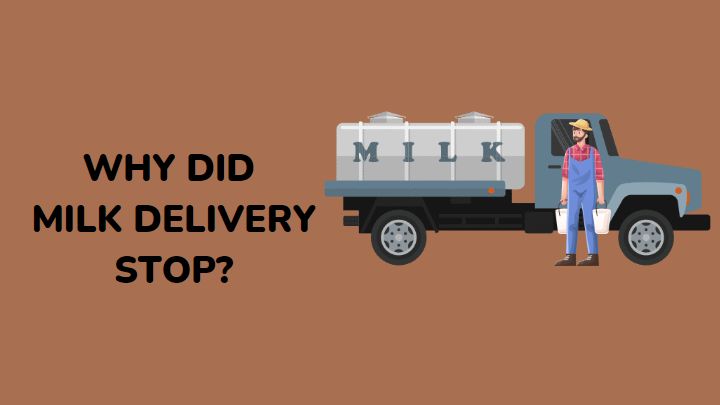Ever wondered why no milkman is ringing the doorbell anymore? What put a stop to milk delivery? Let’s go back a few years.
Milk delivery started with industrialization. There were more urban areas and families moved from the rural areas closer to the town, So, they could no longer keep the cow(s) that produced fresh milk for them.
More dairy farms sprung up as some dairy farmers saw a potential business.
Milkmen would carry large amounts of milk in large containers and sell measured portions to people who wanted to buy. The first milk home delivery happened in Vermont in 1785.
Milk delivery was a great relief to families. People did not have to give up on getting milk every day because they moved. But milk delivery stopped at a point.
This article discusses the era of milk delivery in the United States and why it stopped.
About milk delivery
Milk delivery is a system that ensures fresh milk gets to customers’ doorsteps through a milkman or milkwoman. This was usually done in the mornings when most families need milk for breakfast.
Then, the deliverers carried fresh milk in large containers and sold measured portions to individuals.
Afterward, the milkman carried milk about in smaller containers, and each family could have and buy as much as they wanted.
In 1878, the first glass milk bottle received a patent and was called the Lester milk jar. The following year, milk was sold in glass bottles. Also, families could order milk in as many bottles as they wanted, and they’d get them the next day.
Indeed, it was a good way to get fresh milk directly from farms daily.
As perishable food, people couldn’t keep milk fresh beyond day one. So, milk delivery was the best option. In addition, milk delivery vehicles also evolved from carts and horses to milk trucks.
Why did milk delivery stop?
Milk delivery stopped in the 1930s and 1940s because there was more civilization. Refrigerators were produced, people began to own cars, and grocery stores & supermarkets were built too.
Moreover, people moved further away into the suburbs, and not many milkmen could travel that distance to supply milk every day.
Also, stores were closer to homes, and people could drive or take the bus there to buy milk. People could buy large amounts of milk and refrigerate them for long periods.
More so, grocery stores and supermarkets replaced specialty stores making it more convenient for people to buy a lot of things (bread, meat, and milk) in one store.
Additionally, further inventions brought cost-effective ways to package milk. So, glass bottles gave way to milk cartons and plastic containers. You may wonder if people refrigerated raw milk. No, they didn’t.
With the surge of refrigeration methods, preservation methods like pasteurization were also invented to extend the shelf life of milk. Plus, pasteurization made healthier and more hygienically prepared milk available.
Did milk delivery stop in the United States?
Yes, it did but it’s back again. Although milk delivery stopped, there’s been a resurgence in recent years, especially during the pandemic year.
Moreover, for the sake of convenience, many families desire to buy and have things delivered to them at home. The same applied to milk. So, the milkmen had to come back but in a different and better form.
Today, milk can be delivered in as many cartons or containers if you’re ready to pay a delivery fee.
The stay-at-home order during the pandemic increased the need for milk delivery, and it was good business for people who offered this service.
Additionally, milk delivery became more popular because consumers felt more assured of the source of the milk they were buying.
Also, it was a good way to help local businesses grow.
FAQs
Was milkman a real job?
Yes, it was.
Before milk delivery stopped, the milkman was a real job classified under farm workers. It remains a job since milk delivery is still in demand.
However, there is a new face to the role, which varies with brands and organizations.
Do milk trucks still exist?
Yes, they do.
Milk trucks are milk delivery vans and are very much available today. However, they have undergone modifications from what they used to look like.
What do you need to drive a milk truck?
You don’t need anything more than a regular driving license to drive a milk truck.
Conclusion
The milkman came, then he left, and he’s back again. Milk delivery brought so much relief to families, especially those who used to own one or two cows but had to give them up when they moved to urban areas.
There’s no better milk than fresh milk. Besides, it’s healthy. Knowing the source of the milk you drink makes the milk taste a lot better.
When milk delivery first stopped, it seemed like a better way to get a lot of things from one store. However, you’ll agree with me that the renaissance of the milkman feels even better.
I hope you enjoyed this article just as I enjoyed researching and publishing it. If you’d like to learn another fun fact about milk, this article describes how many glasses of milk one should drink per day.
Thanks for reading.
